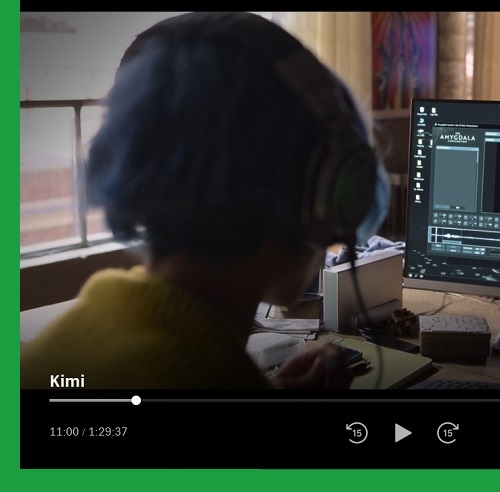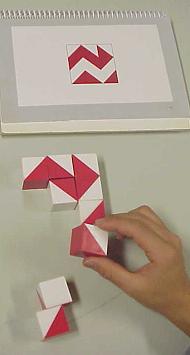Books by George Steiner at
https://openroadmedia.com/contributor/george-steiner —

Related language —

Books by George Steiner at
https://openroadmedia.com/contributor/george-steiner —

Related language —


From "Siri + Wechsler" in this journal —
|
For Little Man Tate —
Related material — Wechsler in this journal and
Mark and Lucille, Bill and Violet, Al and Regina,
|
Related material —

Or: The Confessions of Nat Tate
“A convincing lie is, in its own way, a tiny, perfect narrative.”
— William Boyd, “A Short History of the Short Story” (2006)
“A novel written in the first-person singular has certain powerful
narrative advantages, especially when it takes the form of a ‘confession.'”
— William Boyd, “Memoir of a Plagiarist” (1994)
From a Log24 post yesterday —
For Little Man Tate —

Related material — Wechsler in this journal and an earlier Siri Hustvedt
art novel, from 2003 —
Mark and Lucille, Bill and Violet, Al and Regina, etc., etc., etc. —

Amy Adams in the new film “Her” —
“You’re dating an OS? What is that like?”
— Question quoted in a Hollywood Reporter
story on the film’s second trailer
From the same story, by Philiana Ng —
” The trailer is set to Arcade Fire’s
mid-tempo ballad ‘Supersymmetry.’ “
Parts of an answer for Amy —
Nov. 26, 2012, as well as
Dec. 24, 2013, and
The Hollywood Reporter story is from Dec. 3, 2013.
See also that date in this journal.
This journal on June 18, 2008—
The Wechsler Cubes story continues with a paper from December 2009…
"Learning effects were assessed for the block design (BD) task,
on the basis of variation in 2 stimulus parameters:
perceptual cohesiveness (PC) and set size uncertainty (U)." —
(Click image for some background.)
The real intelligence test is, of course, the one Wechsler flunked—
investigating the properties of designs made with sixteen
of his cubes instead of nine.
Continuing this afternoon's meditation on Hollywood
endings, recall the ending of the 1966 David Niven
version of Casino Royale—
"Eventually, Jimmy's atomic pill explodes, destroying Casino Royale
along with everyone inside…. Sir James and all of his agents then
appear in heaven, with angel wings and harps and Jimmy Bond is
shown descending into the fires of hell." — Wikipedia
This evening's NY Lottery numbers are 169 and 1243.
An occurence of 169 in this journal on June 18, 2008—
Tangled Up In Red
| CHANGE FEW CAN BELIEVE IN |
See Siri Hustvedt on the name "Wechsler"
and see the tag "permutahedron" in this journal.
| CHANGE FEW CAN BELIEVE IN |
Page 67 —
“… Bill and Violet were married. The wedding was held in the Bowery loft on June 16th, the same day Joyce’s Jewish Ulysses had wandered around Dublin. A few minutes before the exchange of vows, I noted that Violet’s last name, Blom, was only an o away from Bloom, and that meaningless link led me to reflect on Bill’s name, Wechsler, which carries the German root for change, changing, and making change. Blooming and changing, I thought.”
For Hustvedt’s discussion of Wechsler’s art– sculptured cubes, which she calls “tightly orchestrated semantic bombs” (p. 169)– see Log24, May 25, 2008.
(after David Wechsler,
1896-1981, chief
psychologist at Bellevue)

These cubes are used to
make 3×3 patterns for
psychological testing.
Related 3×3 patterns appear
in “nine-patch” quilt blocks
and in the following–
| Don Park at docuverse.com, Jan. 19, 2007: “How to draw an Identicon
A 9-block is a small quilt using only 3 types of patches, out of 16 available, in 9 positions. Using the identicon code, 3 patches are selected: one for center position, one for 4 sides, and one for 4 corners. Positions and Rotations For center position, only a symmetric patch is selected (patch 1, 5, 9, and 16). For corner and side positions, patch is rotated by 90 degree moving clock-wise starting from top-left position and top position respectively.” |
| From a weblog by Scott Sherrill-Mix:
“… Don Park came up with the original idea for representing users with geometric shapes….” Claire | 20-Dec-07 at 9:35 pm | Permalink “This reminds me of a flash demo by Jarred Tarbell |
| Jared Tarbell at levitated.net, May 15, 2002:
“The nine block is a common design pattern among quilters. Its construction methods and primitive building shapes are simple, yet produce millions of interesting variations.  Figure A. Four 9 block patterns,
arbitrarily assembled, show the grid composition of the block. Each block is composed of 9 squares, arranged in a 3 x 3 grid. Each square is composed of one of 16 primitive shapes. Shapes are arranged such that the block is radially symmetric. Color is modified and assigned arbitrarily to each new block.
The basic building blocks of the nine block are limited to 16 unique geometric shapes. Each shape is allowed to rotate in 90 degree increments. Only 4 shapes are allowed in the center position to maintain radial symmetry.
 Figure B. The 16 possible shapes allowed |
Such designs become of mathematical interest when their size is increased slightly, from square arrays of nine blocks to square arrays of sixteen. See Block Designs in Art and Mathematics.
(This entry was suggested by examples of 4×4 Identicons in use at Secret Blogging Seminar.)
Hermann Hesse's 1943 The Glass Bead Game (Picador paperback, Dec. 6, 2002, pp. 139-140)–
"For the present, the Master showed him a bulky memorandum, a proposal he had received from an organist– one of the innumerable proposals which the directorate of the Game regularly had to examine. Usually these were suggestions for the admission of new material to the Archives. One man, for example, had made a meticulous study of the history of the madrigal and discovered in the development of the style a curved that he had expressed both musically and mathematically, so that it could be included in the vocabulary of the Game. Another had examined the rhythmic structure of Julius Caesar's Latin and discovered the most striking congruences with the results of well-known studies of the intervals in Byzantine hymns. Or again some fanatic had once more unearthed some new cabala hidden in the musical notation of the fifteenth century. Then there were the tempestuous letters from abstruse experimenters who could arrive at the most astounding conclusions from, say, a comparison of the horoscopes of Goethe and Spinoza; such letters often included pretty and seemingly enlightening geometric drawings in several colors."
From Siri Hustvedt, author of Mysteries of the Rectangle: Essays on Painting (Princeton Architectural Press, 2005)– What I Loved: A Novel (Picador paperback, March 1, 2004, page 168)–
A description of the work of Bill Wechsler, a fictional artist:
"Bill worked long hours on a series of autonomous pieces about numbers. Like O's Journey, the works took place inside glass cubes, but these were twice as large– about two feet square. He drew his inspiration from sources as varied as the Cabbala, physics, baseball box scores, and stock market reports. He painted, cut, sculpted, distorted, and broke the numerical signs in each work until they became unrecognizable. He included figures, objects, books, windows, and always the written word for the number. It was rambunctious art, thick with allusion– to voids, blanks, holes, to monotheism and the individual, the the dialectic and yin-yang, to the Trinity, the three fates, and three wishes, to the golden rectangle, to seven heavens, the seven lower orders of the sephiroth, the nine Muses, the nine circles of Hell, the nine worlds of Norse mythology, but also to popular references like A Better Marriage in Five Easy Lessons and Thinner Thighs in Seven Days. Twelve-step programs were referred to in both cube one and cube two. A miniature copy of a book called The Six Mistakes Parents Make Most Often lay at the bottom of cube six. Puns appeared, usually well disguised– one, won; two, too, and Tuesday; four, for, forth; ate, eight. Bill was partial to rhymes as well, both in images and words. In cube nine, the geometric figure for a line had been painted on one glass wall. In cube three, a tiny man wearing the black-and-white prison garb of cartoons and dragging a leg iron has
— End of page 168 —
opened the door to his cell. The hidden rhyme is "free." Looking closely through the walls of the cube, one can see the parallel rhyme in another language: the German word drei is scratched into one glass wall. Lying at the bottom of the same box is a tiny black-and-white photograph cut from a book that shows the entrance to Auschwitz: ARBEIT MACHT FREI. With every number, the arbitrary dance of associations worked togethere to create a tiny mental landscape that ranged in tone from wish-fulfillment dream to nightmare. Although dense, the effect of the cubes wasn't visually disorienting. Each object, painting, drawing, bit of text, or sculpted figure found its rightful place under the glass according to the necessary, if mad, logic of numerical, pictorial, and verbal connection– and the colors of each were startling. Every number had been given a thematic hue. Bill had been interested in Goethe's color wheel and in Alfred Jensen's use of it in his thick, hallucinatory paintings of numbers. He had assigned each number a color. Like Goethe, he included black and white, although he didn't bother with the poet's meanings. Zero and one were white. Two was blue. Three was red, four was yellow, and he mixed colors: pale blue for five, purples in six, oranges in seven, greens in eight, and blacks and grays in nine. Although other colors and omnipresent newsprint always intruded on the basic scheme, the myriad shades of a single color dominated each cube.
The number pieces were the work of a man at the top of his form. An organic extension of everything Bill had done before, these knots of symbols had an explosive effect. The longer I looked at them, the more the miniature constructions seemed on the brink of bursting from internal pressure. They were tightly orchestrated semantic bombs through which Bill laid bare the arbitrary roots of meaning itself– that peculiar social contract generated by little squiggles, dashes, lines, and loops on a page."
|
From 2002:
Above: Dr. Harrison Pope, Harvard professor of psychiatry, demonstrates the use of the Wechsler Adult Intelligence Scale "block design" subtest. |
|
ZZ
Figures from the
Poem by Eugen Jost:
Mit Zeichen und Zahlen
Numbers and Names,
With numbers and names English translation A related poem:
Alphabets
From time to time
But if a savage
— Hermann Hesse (1943), |
Powered by WordPress